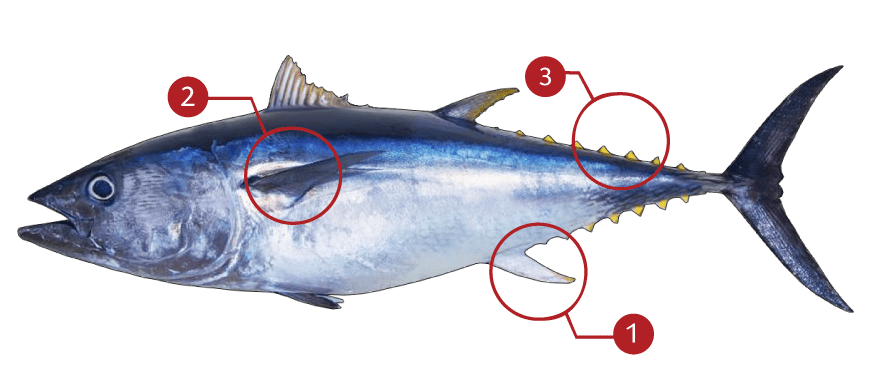BLUEFIN TUNA
How to identify a Bluefin Tuna
It can be distinguished from almost all others by its rather short pectoral fins which extend only as far back as the eleventh of twelfth spine in the first dorsal fin. There are 12-14 spines in the first dorsal fin and 13-15 rays in the second. The anal fin has 11-15 rays. It has the highest gill raker count of any species of Thunnus with 34-43 on the first arch. The ventral surface of the liver is striated and the middle lobe is usually the largest. The anal fin and the finlets are dusky yellow edged with black. The lateral keel is black in adults.
Where to catch Bluefin Tuna
The bluefin tuna occurs in subtropical and temperate waters of the North Atlantic Ocean and in the Mediterranean and Black Seas. It is a pelagic, schooling, highly migratory species and like many species of fish, the smallest specimens form the largest schools and vice versa. The migration of the bluefin tuna appears to be the most extensive of all fish species and is tied to water temperature, spawning habits, and the seasonal movements of fishes on which the bluefin feeds. The giants of the species make the longest migrations, sometimes traveling across the entire span of the northern Atlantic Ocean.
IDENTIFICATION

| |
Anal fin has 11-15 rays |
| |
It can be distinguished from almost all others by its rather short pectoral fins which extend only as far back as the eleventh of twelfth spine in the first dorsal fin |
| |
The anal fin and the finlets are dusky yellow edged with black. The lateral keel is black in adults. |
TARGET AREAS
|
|
Acknowledgements: We thank TAKEMEFISHING.org (www.takemefishing.org), Wisconsin Department of Natural Resources, Indiana Department of Natural Resources for their contributions to these FISH FACTS.

